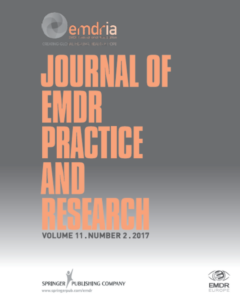Changes in posttraumatic cognitions mediate the effects of trauma-focused therapy on paranoia (Schizophrenia Bulletin Open)
Evidence suggests that in individuals with psychosis, paranoia is reduced after trauma-focused therapy aimed at comorbid PTSD.
Read MoreHow to heal their psychological wounds? Effectiveness of EMDR therapy on post-traumatic stress symptoms, mind-wandering and suicidal ideation in Iranian child abuse victims (Counselling and Psychotherapy Research)
Studies have shown that child abuse as a traumatic event can lead to symptoms of PTSD, mind-wandering and suicidal ideation in adulthood.
Read MoreMulticenter randomized controlled trial on the provision of the EMDR-PRECI to female minors victims of sexual and/or physical violence and related PTSD diagnosis (American Journal of Applied Psychology)
EMDR-PRECI could be a feasible therapy to address PTSD, anxiety and depression symptoms in female sexual/physical violence victims.
Read MoreComparative Efficiency of EMDR and Prolonged Exposure in Treating Posttraumatic Stress Disorder: A Randomized Trial (Journal of EMDR Practice and Research)
Comparative treatment efficiency of EMDR therapy and prolonged exposure (PE) therapy was tested for 20 participants diagnosed with PTSD.
Read MoreA multicenter phase II RCT to compare the effectiveness of EMDR versus TAU in patients with a first-episode psychosis and psychological trauma: A protocol design (Frontiers in Psychiatry)
Efficacy of EMDR therapy in reducing trauma and clinical symptoms in patients with first episode psychosis and a history of trauma.
Read MoreA randomized controlled trial examining the impact of individual trauma-focused therapy for individuals receiving group treatment for depression (Psychology and Psychotherapy: Theory, Research and Practice)
For participants with a major depressive episode, the addition of trauma-focused sessions significantly increased the likelihood of remission.
Read MoreAddiction-focused eye movement desensitization and reprocessing therapy as an adjunct to regular outpatient treatment for alcohol use disorder: Results from a randomized clinical trial (Alcoholism: Clinical & Experimental Research)
Feasibility, safety, and efficacy of addiction-focused eye movement desensitization and reprocessing (AF-EMDR) treatment.
Read MoreEfficacy of eye movement desensitization and reprocessing on the quality of life in patients with major depressive disorder: A randomized clinical trial (Psychology Research and Behavior Management)
Investigating the efficacy of EMDR on the quality of life (QOL) in patients with major depressive disorder (MDD).
Read MoreThe EMDR recent birth trauma protocol: A pilot randomized clinical trial after traumatic childbirth (Psychology and Health)
This pilot study investigated the effectiveness of brief EMDR intervention compared to treatment-as-usual in women with post-partum PTSD.
Read MoreEfficacy of eye movement desensitization & reprocessing versus cognitive behavioral therapy in post-traumatic stress and depressive symptoms: Study protocol for a randomized controlled trial (Contemporary Clinical Trials Communications)
This RCT protocol aims to compare the efficacy of EMDR and CBT in treating PTSD and depressive symptoms in Pakistan.
Read MoreLongitudinal multisite randomized controlled trial on the provision of the EMDR-IGTP-OTS to refugee minors in Valencia, Spain (American Journal of Applied Psychology)
Effectiveness of EMDR-Integrative Group Treatment Protocol for Ongoing Traumatic Stress for refugee adolescents in Valencia, Spain.
Read MoreEMDR and Nonpharmacological Techniques for Anxiety Prevention in Children Prior to Invasive Medical Procedures: A Randomized Controlled Trial (Journal of EMDR Practice and Research)
Nonpharmacological Techniques (NPT) have been suggested as an efficient & safe means to reduce pain & anxiety in invasive medical procedures.
Read More


